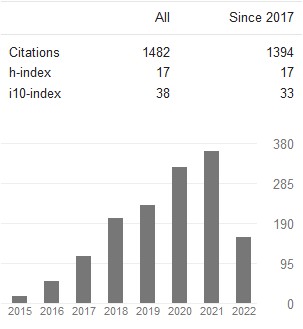Update of Treatment for Children of tuberous sclerosis complex
Abstract
The children of tuberous sclerosis complex were also named Bourneville disease, and its neural symptoms and pathological change was firstly described by Bourneville in 1908. Heinrich Vogt pointed out the three main symptoms, namely epilepsy, mental retardation and facial angiofibromas. It is an autosomal dominant disease. It is an important cause of epilepsy, autism, and renal and pulmonary disease in children and adults. The appropriate therapy and prognosis for TSC patients are often different than that for individuals with epilepsy, renal tumors, or interstitial lung disease from other causes. In recent years, certain progress have been made in management of tuberous sclerosis, inhibitors of the mammalian target of rapamycin (mTOR) have demonstrated regression of astrocytomas, angiofibromas, and angiomyoliomas, as well as improved pulmonary function in persons with TSC. This article reviews the current therapeutic recommendations for medical and surgical management of neurologic, renal, and pulmonary manifestations of TSC
Keywords:
Children of tuberous sclerosis complex, Treatment, ProgressDownloads
Published
How to Cite
Issue
Section
Copyright (c) 2015 Fuyong Jiao, Li Wei, Bilal Hiader Shamsi

This work is licensed under a Creative Commons Attribution-NonCommercial-ShareAlike 4.0 International License.



 Journal of Innovations in Pharmaceutical and Biological Sciences is licensed under a Creative Commons Attribution-NonCommercial-ShareAlike 4.0 International License. Based on a work at
Journal of Innovations in Pharmaceutical and Biological Sciences is licensed under a Creative Commons Attribution-NonCommercial-ShareAlike 4.0 International License. Based on a work at